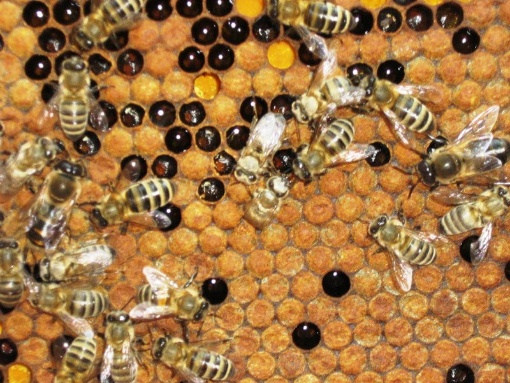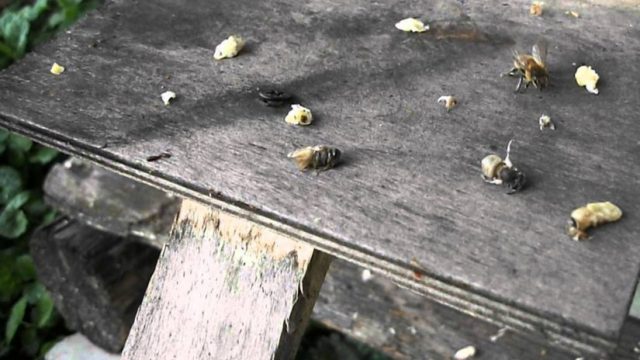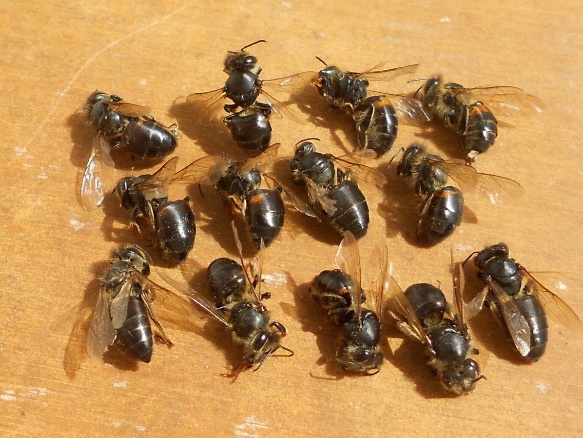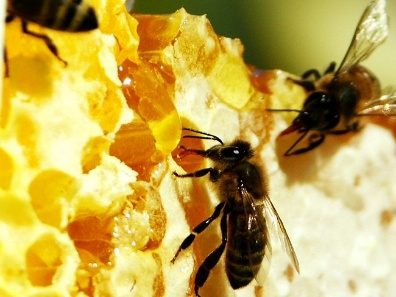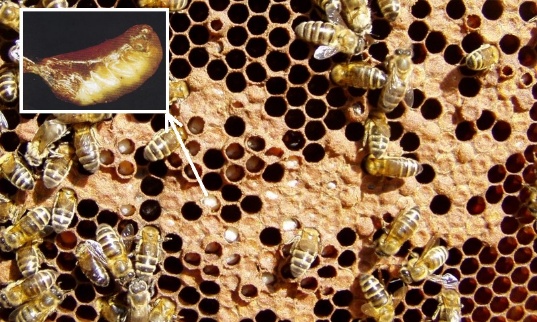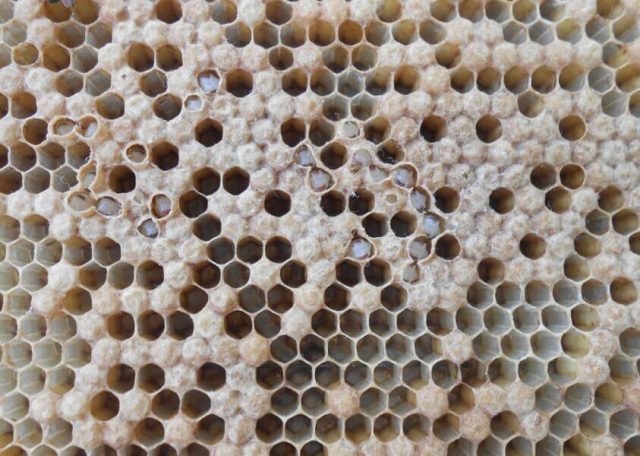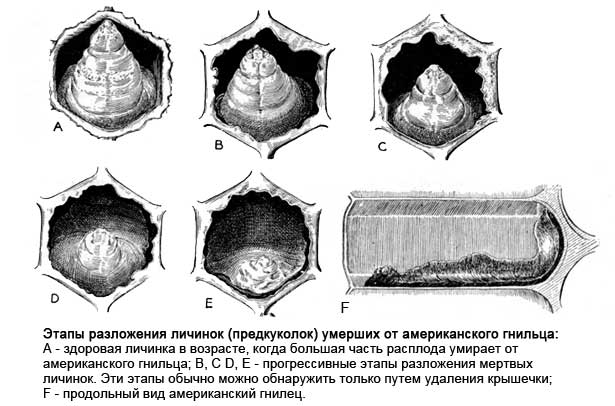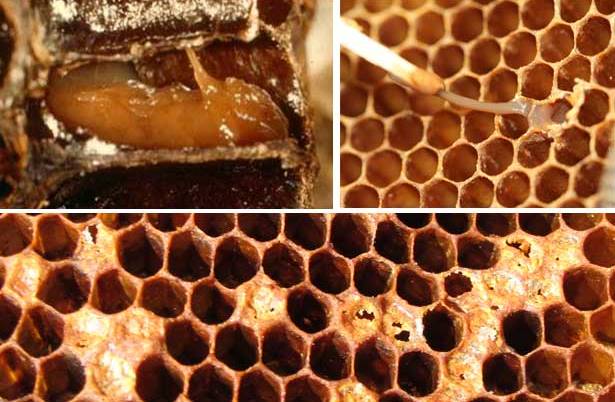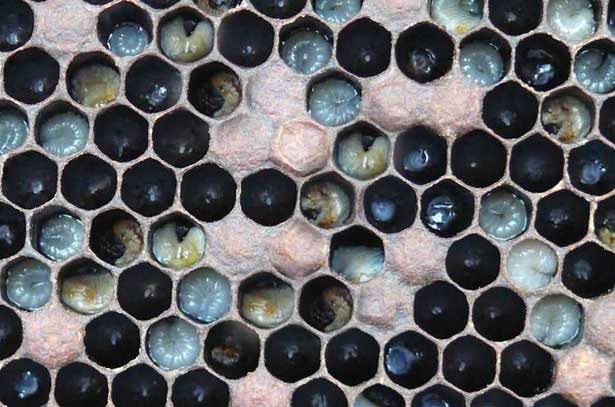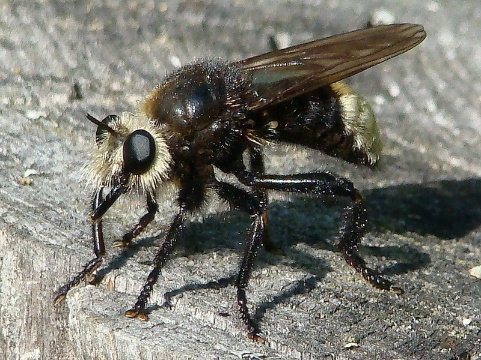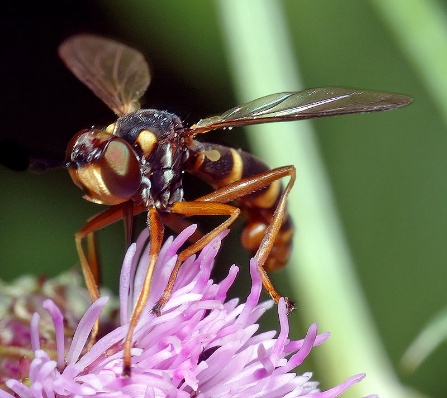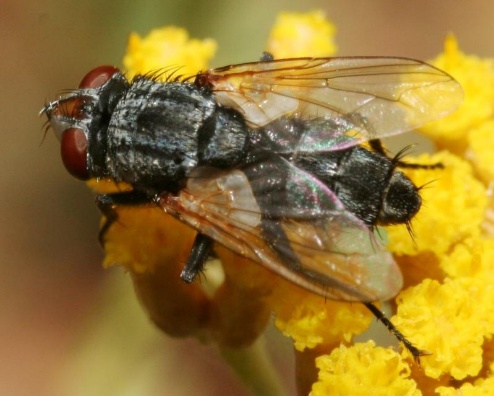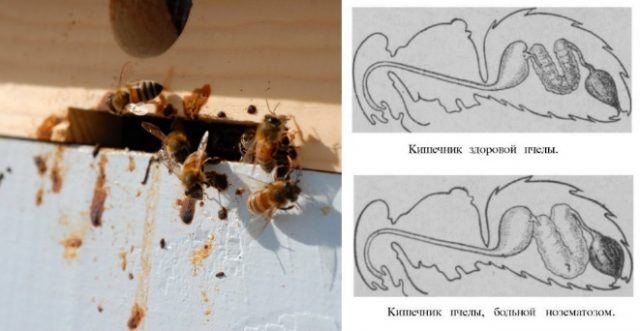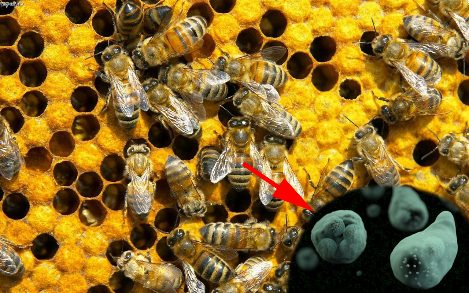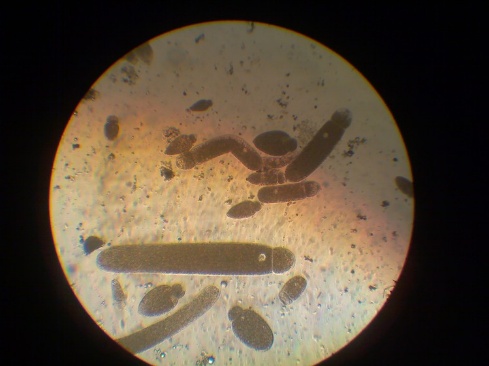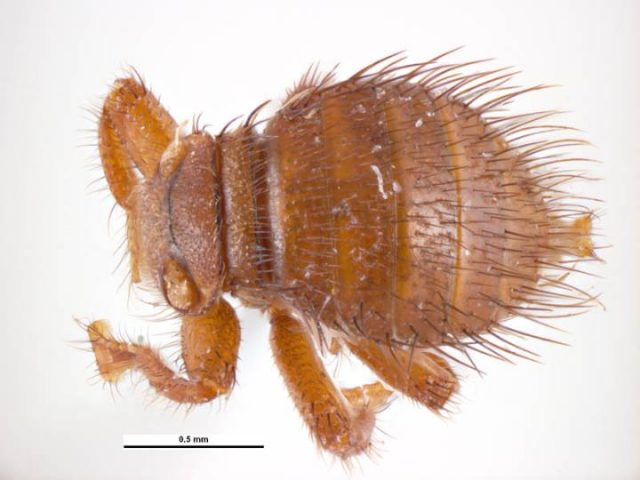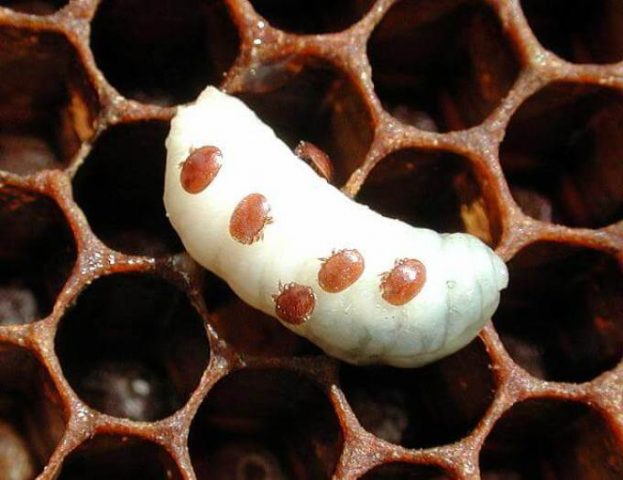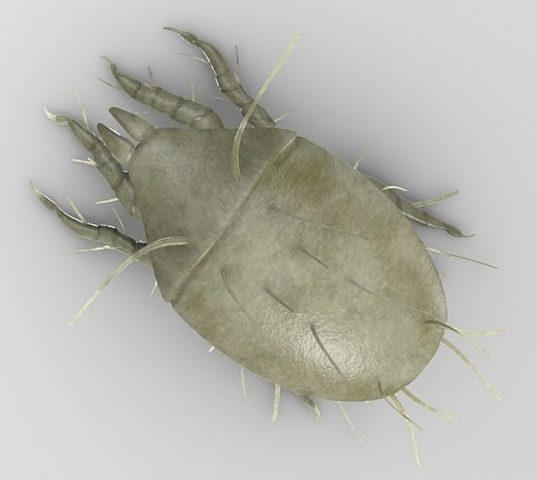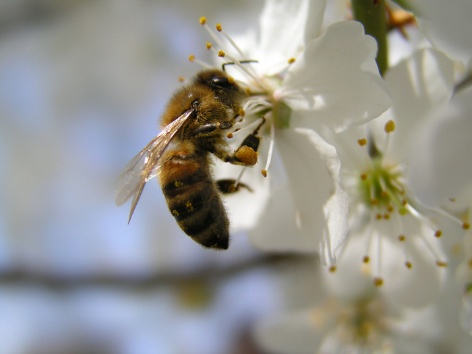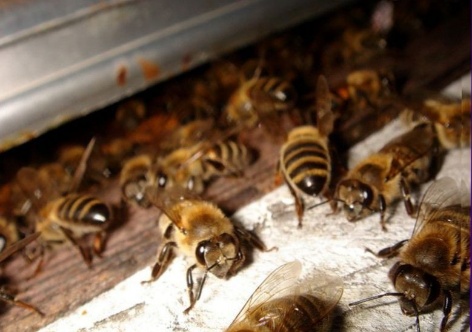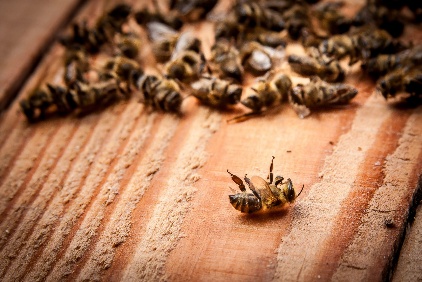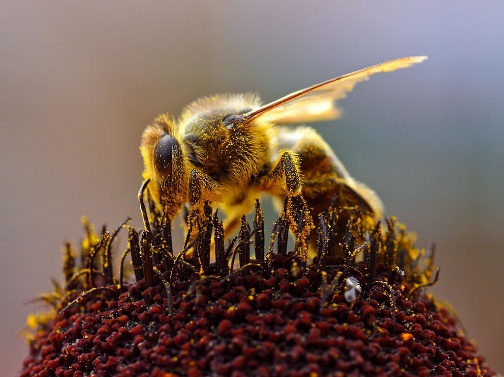Content
Diseases of bees cause serious economic damage to beekeeping. If the disease is not detected in time, the infection will spread and destroy all bee colonies in the apiary. But even without infections, the beekeeper can face an inexplicable extinction of bees. Such extinction can occur due to certain non-communicable diseases or intoxications.
Classification of diseases of bees
Unlike other branches of animal husbandry, infectious diseases in beekeeping can completely destroy the apiary. In general, the situation with bees is strange. One individual does not cost anything, but a colony is a fairly expensive unit. At the same time, the approach to diseases of bees and chickens in poultry and beekeeping is similar, as are their methods of treatment: quickly destroy all.
Diseases affecting bees can be divided into 4 large groups:
- viral;
- caused by microorganisms;
- invasive;
- non-infectious.
Diseases differ not only in symptoms, but also in the season of occurrence. Although the division into seasons is arbitrary. In a warm winter, bees may well get sick with "spring" diseases.
Symptoms, especially in viral diseases, often overlap or look very similar. Therefore, in most cases, a laboratory study is needed to make a diagnosis. On the other hand, many diseases are treated with the same drugs.
But this is only if the plans include the sale of products. When choosing between keeping the family and generating income from the hive, it is best to keep the colony.
Diagnosis
With the exception of rare cases when it can be said for sure what kind of disease affected the bee colony, diagnostics should be carried out in the laboratory. The beekeeper himself will probably be able to determine only the presence of macro pests in the hive: the varroa mite or the wax moth. There are other people who like to eat honey or maggots. But these are all fairly large insects. But even in this case, novice beekeepers often cannot understand what kind of spots appeared on their bees: whether it is varroa, or pollen. Therefore, in any doubtful cases, bees must be handed over for research.
Inspection of bee colonies: what you should pay attention to
When examining hives and assessing the health of families, you need to pay attention to some signs of disease:
- the presence of a large number of drone brood (problems with the uterus);
- a large number of ugly bees (mites);
- too much death (bacterial and viral diseases);
- inability of bees to fly;
- gnawing of sealed cells by workers;
- changing the color of the cap;
- collapse of the lids;
- the formation of holes in the middle of the lids;
- diarrhea.
All these are the first signs of illness. When they appear, you can try to diagnose yourself, but it is better to give the material for analysis.
When is it necessary to do laboratory diagnostics
In fact, with the exception of very obvious symptoms, laboratory diagnostics will have to be done for any signs of disease. Very similar to each other:
- amoebiasis and nosematosis;
- conopidosis and false myiasis;
- foulbrood.
An accurate diagnosis of virosis can often only be made in a laboratory. For analyzes, depending on the type of disease, dead or live bees are collected. With miasis, the dead are needed. With virosis - live, which are pre-filled with a preservative.
Infectious diseases of bees and their treatment
Infectious diseases include:
- viral;
- bacterial;
- caused by the simplest.
Those diseases that arise when other organisms are parasitized on bees are called invasive.
Of the infectious diseases, only bacterial and protozoa can be treated, since they are amenable to antibiotic treatment. In the case of viral diseases, preventive measures are taken. In case of severe infection, the colonies are destroyed in all cases.
Viral
Any viral diseases differ from bacterial ones in that they are caused by a self-copying region of RNA. The virus cannot even be called a living organism. Therefore, biologists and physicians usually talk not about the destruction, but about the deactivation of the virus.
When a virus appears in bees, treatment is already useless. You can only support families by applying symptomatic treatment. But it is better to prevent viral diseases with the help of preventive measures.
In most cases, the virus disease in bees is expressed in some form of paralysis:
- chronic;
- acute;
- viral.
The signs of paralysis in bees and the treatment of the disease will depend on the virus that has infected the colony.
Viral paralysis
Pupae and adults get sick. During illness, the color of the bee changes, the nervous system is damaged and death. The most common cases of viral paralysis are in the spring and summer. The onset of the disease is facilitated by a lack of bee bread in the hive and sudden changes in weather from cold snap to heat and vice versa.
The virus is unstable. In the most favorable conditions for him, it remains active for no more than a month. Infection occurs when a sick individual comes into contact with a healthy one. The incubation period of the disease is 4-10 days.
Signs of viral paralysis:
- inability to take off;
- lethargy;
- trembling of wings and body;
- impaired coordination of movements;
- lack of response to external stimuli.
Since the bees have time to return home, all these signs of the disease can be observed on the landing site or next to the hive.
Due to the accumulation of watery contents in the intestines, the abdomen swells. Hair falls out on the chest and abdomen, giving the bee its color, and the insect becomes shiny and black. The smell of rotting fish emanates from it. After 1-2 weeks after the onset of symptoms of the disease, the bee dies.
The diagnosis is made in the laboratory. To do this, 15-20 live individuals with signs of the disease are collected in a jar, poured with glycerin or liquid paraffin and sent for analysis.
Treatment for viral paralysis in bees has not been developed. Prevention is carried out with various drugs, depending on the time of the year when the outbreak of the disease occurred:
- in the summer they give top dressing with vitamin preparations and antibiotics;
- protein feeding is used in early spring;
- at any time with the appearance of paralysis, bees are sprayed with pancreatic ribonuclease. The course is 4 times with a break of 7 days.
Viral paralysis can be chronic or acute. These are not different forms of the course of the disease, they are two different types.And different strains of the virus cause paralysis.
Acute paralysis
This type of disease affects only adults. The course is sharp and always ends with the death of all adult bees in the colony, manifests itself in early spring. Sometimes an outbreak can occur at the end of wintering. In this case, as with nosematosis, in the hive you can see the vomited frames and dead bees.
A mixed type of disease can occur if another infection is "attached" to the viral paralysis. The diagnosis is made in the laboratory. The beekeeper himself, by the appearance of the frames and dead bees, will not be able to determine from what disease the families should be treated. You can not go to the laboratory only if you are sure that the bees have some of the paralysis strains. All types of viral paralysis are treated with the same drugs.
Chronic paralysis
Because of the strain that causes chronic paralysis, all forms of this disease are called black disease. The outbreak usually occurs in the spring. Chronic paralysis during the winter can manifest itself only as an exception. Due to the spring development of the disease, other names have been given to it:
- May;
- forest bribe disease;
- black baldness syndrome.
The virus infects not only adults, but also pupae. Symptoms of the disease are common with acute paralysis. If you do not take measures for treatment, the family quickly dies. In the treatment of chronic paralysis of bees, the same medicines are used as in acute paralysis.
Cloud wing
The scientific name of the disease is virosis. Airborne viral disease. Bees can get sick at any time of the year. The virus is localized in the chest and head of bees. In queens, it was found in the abdomen.
A symptom of the disease is wing clouding and inability to fly. Moreover, the second symptom is permanent, and the first does not always appear. The diagnosis is made in the laboratory. The virus, 2 weeks after the appearance of clinical signs, leads to the death of bees. There is no cure.
Filamentovirosis
Another type of virosis, often paired with nosematosis. The disease is caused by a large DNA virus. It affects the ovaries and adipose tissue of bees. Families affected by the virus do not winter well and often die in late winter or early spring. The transmission routes of the virus are poorly understood. Presumably, the disease can be carried by the varroa mite.
The main symptom of a family infection with filamentovirus is the attempts of sick bees to crawl out even in cold weather. Healthy bees remain in the hive at this time. When flying around, sick bees crawl on the ground, unable to rise into the air.
There is no cure.
Baggy brood
Seasonal illness. It develops in case of a shortage of bee bread and honey, as well as in the presence of unfavorable conditions. In southern Russia, signs of the disease can be observed as early as May. In more northern regions, the disease develops in the early summer months.
Adults show no signs of illness, but carry the virus for several seasons. The maximum shelf life of an active virus is 9 months in a honeycomb. In honey for 1-2 months, depending on the storage temperature of the product. Found on all continents.
Symptoms
The first sign of illness is sunken lids of the sealed honeycomb. It can also be the first sign of foulbrood. The signs of decomposition are also similar. In the case of saccular brood, at the first stage, the larva does not disintegrate into a homogeneous putrefactive mass, but remains on its back. The larva is flabby, the color is dull. Later, the tissues disintegrate to the state of a granular liquid, the skin hardens and turns white. The larva can be easily removed from the cell.
Signs of illness disappear by July and return in the fall months. The cycle repeats for the next season. The keepers of the virus are seemingly healthy bees. When a single larva is infected, the disease will quickly spread throughout the hive.
The disease is not treated.If a virus is detected in the apiary, a quarantine is declared. Queens are temporarily removed from infected colonies. For preventive purposes, bees are fed with sugar syrup with Levomycetin or Biomycin.
Caused by bacterioses and mycoses
In addition to viral diseases, bees also have enough bacterial diseases. Due to the lack of ventilation and high air humidity, mold often starts in the hives. Spores of mold fungi constantly fly in the air, so you can protect yourself from mycoses only with the correct arrangement of hives.
Paratyphoid
He is hafniosis or infectious diarrhea. The causative agent is a representative of the Hafnia alvei family of enterobacteria. Disease symptoms:
- enlarged abdomen;
- yellow-brown diarrhea;
- unpleasant odor;
- bees are weakened, cannot fly.
The causative agent of the disease enters the intestines with contaminated food and water. The incubation period is 3-14 days. When a family is infected at the end of winter, the disintegration of the club, the excitement of bees, the exit of workers through the entrance gate is observed.
Treatment is carried out with Levomycetin and Myocin. For an accurate diagnosis, it is necessary to hand over the bees to the laboratory.
Colibacillosis
Or escheriosis. Symptoms of colibacillosis are similar to paratyphoid fever:
- enlarged abdomen;
- diarrhea;
- loss of ability to fly.
Analysis in the laboratory is required again. For the treatment of escheriosis, antibiotics that act on the intestinal microflora are also used.
Melanosis
A fungal disease that most commonly affects the uterus. Queens lose their ability to reproduce as the fungus infects the ovaries and the seminal receptacle. The initial stage of the disease is asymptomatic, but later the female loses the ability to lay eggs and becomes inactive. The abdomen is also enlarged.
For treatment, a course of antibiotics is soldered.
Septicemia
Bacterial disease. Popularly and applied to humans, this disease is called general blood poisoning. In bees, first of all, hemolymph suffers, which replaces human blood with these insects.
Septicemia can occur in two forms: acute and chronic. In the first case, the symptoms of the disease appear quickly:
- activity decreases;
- the ability to fly is lost;
- death with signs of paralysis.
In the chronic form, there are no signs of the disease until the death of the bee. With septicemia, bees usually die in large numbers. There is no cure.
Ascospherosis
Causes mold ascosphere apis. The most favorable conditions for mold development occur in rainy summers. Ascosphere most often affects drone brood, since it is located closer to the walls of the hive, on which condensation can accumulate in case of poor ventilation.
The main sign of ascospherosis is white-coated larvae or honeycomb. In the combs, instead of larvae, you can find small white lumps that resemble chalk crumbs. Because of this feature, the disease was popularly called "calcareous brood".
Ascospherosis is treated with fungicides specially designed for this purpose. But even they only stop the development of mold. If the family is heavily infected or if the colony is weak, treatment is not carried out. The swarm is destroyed along with the hive.
Aspergillosis
The culprit of the disease is the infamous black mold. Aspergillosis affects any living organism with a weakened immune system. In bees, sedentary larvae are most susceptible to disease. But sometimes mold begins to develop on adult bees. This happens when the members of the colony are weakened by the winter hunger strike.
At the initial stage of the disease, bees are very agitated. Later, this state is replaced by weakness. Insects die. When examining bees that have died from aspergillosis, you can see black mold on their abdomen.
There is no cure for aspergillosis. Black mold is a hard-to-destroy fungus, so instead of trying to treat it, they burn the hive and the family.
Foul
Bacterial disease of bees. Bees suffer from 3 types of foulbrood:
- American;
- European;
- parasitic.
All 3 types of disease are caused by immobile rod-shaped bacteria that can form spores. Such bacteria are commonly referred to as bacilli.
American foulbrood
The bacterium infects adult larvae in sealed cells. Can also affect young pupae. Unsealed brood is resistant to disease.
The danger of American foulbrood is that the spores can persist for decades. Even when boiled, they die only after 13 minutes. Such resistance greatly complicates the treatment of the disease, as well as the processing of hives and equipment.
American foulbrood is easiest to spot in the fall after laying has ceased. Symptoms:
- the cell covers are flattened;
- holes are formed in the caps;
- the color of the larvae changes from white to light brown and subsequently darkens;
- the segments disappear in the larva;
- at the last stage, it turns into a homogeneous dark mass with a putrid odor;
- the remains of the larva dry up at the bottom of the cell.
Treatment
The main treatment measures are to reduce the percentage of bacteria per unit area of the hive. When foulbrood appears, families cut and insulate the nests. It is better to replace infected queens with new ones. If this is not possible, the uterus is kept in a cage for a week.
In case of severe infection, the bees are driven into a new hive. At the end of the day, when all individuals return home, they are swept into a box and kept for 2 days without food. Then the bees are moved to a new disinfected hive.
For treatment, bees are fed with sugar syrup with the addition of antibiotics and sodium norsulfazole.
European foulbrood
The most common disease on the Eurasian continent. European foulbrood infects bee and drone brood equally. Signs:
- the presence of gaps in the brood combs or cells with eggs and young larvae in the middle of the sealed brood: this is the first sign that should alert the beekeeper;
- color change in the infected larva from white to yellow;
- decomposition of the larva and its transformation into a dark slimy mass.
Treatment is the same as for American foulbrood.
Paragnite
Another name is "false foulbrood". It is caused by the bacillus paraalvey. Disputes persist in hives, combs and honey for up to 1 year, in bee bread up to 3 years. Larvae in open and sealed combs are infected. In the chronic course of the disease, pupae are also susceptible to infection. Infection routes and signs of disease are similar to other types of foulbrood. Symptoms of false foulbrood when infesting open brood:
- increased motor activity of the larvae;
- unnatural position in the cells;
- smell from larvae that died in open cells;
- transformation of larvae into crusts.
With a pararot, the age of the dead larvae is greater than with a European one.
Symptoms of a parasite with a sealed brood:
- raised lids on the sealed brood;
- darkening of the lids;
- the formation of a conical cavity in the middle of the lid, but without a hole;
- transformation of the larva into a viscous pasty mass with a rotten smell;
- the formation of dried larvae of dark crusts, easily removed from the honeycomb.
Pupae affected by the parasite stop developing and darken. Inside the pupa there is a cloudy gray liquid with a putrid odor.
Treatment of the disease and preventive measures are the same as for American foulbrood.
Invasive diseases of bees and their treatment
Invasive diseases are diseases that arise as a result of an attack by parasites. The bees are parasitized by:
- flies;
- ticks;
- nematodes;
- intestinal parasites from protozoa;
- bee lice;
- some types of blister beetles.
Diseases caused by flies are called myiasis. Miasis can be not only in bees, but even in humans. The parasitic flies that cause myiasis are different.
Miases
Myases arise in the body of any animal due to the penetration of fly larvae into soft tissues. In the case of bees, such parasitism cannot be called a myiasis, since the animal normally survives.A bee infected with maggot always dies.
One of the pests of beekeeping, the hunchback bee (Phora incrassata Mg.), Lays eggs in the larvae of honey bees. A fly maggot develops in a bee larva for 5 days. After that, the future fly comes out, falls to the bottom of the hive or to the ground and pupates. The fly ends up outside the host. The bee larva dies in this case.
There is no cure for the parasite. As a preventive measure, the systematic cleaning of the hive from dead and other debris is used.
Conopidosis
Other pests causing myiasis in bees belong to the Conipidae family of the Physocephala genus. Of the 600 known species, 100 live on the territory of Russia.
Infection of bees with canopid maggots occurs during flight. The fly lays eggs in the spiracles or simply on the body. The larva moves into the trachea and through it into the abdominal cavity of the bee. In the process of development and nutrition, the maggot destroys the internal organs of the bee. After stage 3, the fly larva pupates.
In canopids, the pupa remains to mature inside the skin of the larva. Ripening lasts 20-25 days, but most of the flies remain hibernating in the pupa and only fly out the next year.
Signs of infection:
- loss of ability to fly;
- greatly enlarged abdomen;
- near the hives there are many dead bees lying in a characteristic position: on their backs with a fully extended proboscis and a full elongated abdomen;
- a white larva or dark pupa can be seen through the segmental membranes in the abdomen;
- a sharp weakening of the colonies.
Due to the presence of a live maggot in the abdomen, it can be mobile even in a dead bee.
Diagnosis of the disease is carried out in the laboratory, since there are flies that parasitize dead insects and cause false myiasis. Determine which of the larvae is in the abdomen of a bee, can only be a specialist in laboratory conditions.
No cure has been developed for the disease. As a preventive measure, the areas under the hives are regularly cleaned and sticks soaked in insecticides are placed near the hives. Flies are poisoned by sitting on these sticks.
Cenotainiosis
Cause disease of the larvae of the parasite fly Senotainia tricuspis. This insect looks like a common house fly. It bears a resemblance to wolfart. But he is only interested in bees. Viviparous fly. Inhabits the southern regions of Russia at the edges of forests.
Cenotainiosis is not contagious. It is provoked only by the fly, which attacks the escaped bees and lays the maggots on the articulation of the head with the chest.
The main sign of the presence of a parasite is bees crawling with their wings spread, which are not able to take off. This is due to the fact that maggots parasitize in the thoracic region of workers and eat away muscles. Minor larval infestation can be overlooked. With a strong defeat, there will be many crawling bees.
There is no cure. Instead of treatment, preventive measures are used to identify flies in the apiary and destroy them. But insecticides used to get rid of flies also kill bees. The use of insecticides is carried out according to certain schemes. The presence of flies is detected by placing white plates of water near the hives. Flies prefer to land on white.
Mermitidosis
If there is intestines, there will be worms. Even if the intestine has a relatively primitive structure. The most common helminthiasis in bees is caused by nematode larvae. This disease in bees is called mermitidosis. The name for nematosis is not entirely accurate, as nematodes are a type of roundworm. They are not all parasites.
According to the classification, mermitids are 2 categories lower than nematodes. They parasitize insects, arthropods, earthworms and other similar organisms. Each species is specific to its host.
In the intestines of bees, the larvae of mermitids parasitize. Adult nematodes live in the soil.Favorable conditions for the disease are created by the presence of a large reservoir near the apiary and high humidity.
The larvae enter the bee while collecting pollen and nectar. Or insects bring them to the hive along with the water. It would be more correct to call the larvae predators, since the parasite is not interested in the death of the host. In case of infection with mermitids, the bee dies. The nematodes that emerged from her body continue to live independently in the ground, laying thousands of eggs during their life.
Symptoms of the disease are expressed in the loss of the ability of bees to fly and the subsequent death of insects. The diagnosis is made after examining the intestines of bees under a microscope in a laboratory. When infected with mermitides, larvae will be found in the bee's digestive tract.
Treatment for mermitidosis has not been developed. Sick families are destroyed. To prevent the disease, the apiary is transferred to a dry place.
Diseases of bees caused by protozoa
There are also bee diseases caused by protozoa that parasitize the intestines of insects. The most common ones are:
- nosematosis;
- amoebiasis;
- gregarinosis.
Due to external signs, various diseases can sometimes be confused. Because of this, laboratory tests will be required for an accurate diagnosis and successful treatment.
Nosematosis
During the spring relocation of families to new hives, it is recommended to remove the vomited frames. The term "vomited" means that the frames are stained with liquid bee droppings. Diarrhea in bees in winter occurs due to infection with Nosema. The disease begins to develop from the end of winter. The maximum level of infection of nosematosis reaches in April-May.
All adult members of the colony are ill. Nozema enters the body of bees in the form of spores along with contaminated water and feed. It can be stored in honey and combs for many years. Therefore, it is recommended to change the hives and frames annually.
Treatment of bees for nosematosis is carried out using a solution of fumagillin in sugar syrup. Preventive measures are standard: compliance with the conditions for keeping bees and systematic disinfection of all equipment and implements in the apiary.
Amebiasis
The disease is caused by amoeba species Malpighamoeba mellificae. Amoebas parasitize in the digestive system of bees, eating soft tissues. The main symptom of amoebiasis is a sharp decline in the number of colonies. With this disease, the bees do not die in the hive, but during the flight, so there will be few dead individuals in the hives.
In addition to a decrease in numbers, one can observe:
- enlarged abdomen;
- diarrhea;
- when opening the hive there is a strong unpleasant odor.
The most favorable period for the life of amoebas is the spring-autumn period. The "main time" of nosematosis is winter or early spring. Diarrhea in bees in summer is highly likely to indicate the disease of bees with amebiasis.
Amoebas remain in the body for more than 6 months. In queens, the disease is sluggish and difficult to diagnose. Amoebiasis in queens is best seen in winter.
For the treatment of the disease, contact and systemic tissue preparations are prescribed. The former are designed to stop the spread of amoebas, the latter kill parasites in the bee's body.
Contact drugs:
- etofamide;
- paromomycin;
- clefamide;
- diloxanide furoate.
The drugs are used to treat parasitic infections and against intestinal parasites.
Systemic tissue amebicides include:
- secnidazole;
- metronidazole;
- tinidazole;
- ornidazole.
Treatment is based on the fact that the drugs penetrate the tissues, and when the amoeba is fed, it dies.
Gregarinosis
The disease is caused by unicellular intestinal parasites - real gregarins. Not found in all countries. But in Russia they are found in warm climates. In cold and temperate conditions, gregarinosis is rare. Bees become infected by consuming gregarine spores with water.
With intensive feeding, gregarine destroys the fat bodies, and the life of the bees is sharply reduced. Infected queens die in the spring.
The diagnosis is made, taking into account the epizootic situation in the region, after laboratory tests. For diagnosis, 20-30 individuals from a family suspicious of gregarinosis are required.
Treatment of bees for gregarinosis is carried out in the same way as for nosematosis.
Entomoses
These are diseases caused by external parasitic insects. The difference from myiasis is that during entomosis the parasite does not penetrate into the body of the bee.
Braulez
In common people lice. Brawl insects cause the disease. Externally, bee lice are very similar to the varroa mite:
- red-brown color;
- rounded body;
- a similar location on the bee's body;
- combined areas.
Brawls are most often found in the Far East and Transcaucasia.
Brawls infect bees by walking to a healthy individual. Lice feed on wax and, at first glance, do not harm bees.
When breeding, the braula lays 1 egg per cell. Coming out of the egg, the larva, in the process of development, manages to gnaw a course up to 10 cm long in the caps, after which it pupates.
Braule symptoms:
- restless behavior of the colony;
- shortening the life span of workers;
- decreased oviposition in the uterus;
- bees bring less supplies;
- deterioration in the development of the colony in the spring;
- heavy wintering;
- in case of severe infection, the swarm gathers from the hive.
Provoking factors for the disease: old honeycomb, dirt, warm winter. Brawls can also end up in another hive along with frames, when they catch other people's swarms or replant infected new queens.
Braulosis is treated in the same way as when a family is infected with varroatosis. These parasites are often found together. With the implementation of preventive measures, not only the number of braul, but also varroa will decrease.
Meleosis
The disease is caused by the blister beetles of the species Meloe brevicollis or the short-winged T-shirt. The adults feed on the nectar of flowers and do no harm. The larvae parasitize in the nests of earth bees. They can also be found in honeybee hives. The larvae gnaw through the intersegmental membranes on the abdomen and suck out the hemolymph. In this case, the bee dies. If the parasite is severely infested, the whole family can die.
Treatment for meleosis has not been developed. Disease control - insecticide treatment of the surrounding area, but this will also lead to the death of bees.
Arachnoses
The common name for these diseases was given by arachnids, that is, ticks. Bees are parasitized by at least 2 species of mites: large varroa and microscopic acarapis (Acarapis woodi).
Varroatosis
Varroa mites feed on the hemolymph of bee larvae. The female mite lays eggs in an unsealed brood cell. The mite prefers drone brood, as drone larvae are larger. Brood infested with mites does not receive sufficient nutrients and the bees emerge from the cells small and weakened. If several ticks parasitized on one larva, the adult insect will be disfigured: with underdeveloped wings, poorly developed legs, or with other problems. The larva may die if the female tick has laid 6 eggs in the cell.
The treatment is carried out with specially developed preparations that do little harm to bees. As a preventive measure, drone brood is destroyed in the spring.
Acarapidosis
The disease is also called acarosis, but this is a more general name. The causative agent of the disease is the Acarapis woodi mite. A fertilized female mite lays eggs in the trachea of bees. Ticks bite into tissues and feed on hemolymph. In large quantities, they can block the path of air. From the upper trachea, the ticks gradually move downward. Adults stick from the inside at the base of the wings. Having fertilized, the female exits through the spiracles.
The main time of infection is winter.The mite does not live either at too low (up to 2 ° C) or at too high summer temperatures. In a warm hive, with close contact of healthy individuals with sick individuals, optimal breeding conditions for the tick are created. One bee can carry up to 150 eggs and adults. Signs of the acarapis tick:
- loss of ability to fly due to lack of air;
- many bees with wings spread at different angles by the end of wintering;
- vomited walls.
You can try to make the diagnosis yourself. For this, the bee is frozen. Then the head with the prothoracic collar is cut off and the exposed trachea is examined. Black, yellow, or brown trachea indicates an infestation with the Acarapis Woody mite.
Treatment is difficult due to the fact that ticks make their way deep into the host's body. For treatment, fumigation with special acaricidal preparations is used.
Brood diseases
In fact, all brood diseases are infectious:
- all types of foulbrood;
- ascospherosis;
- saccular brood;
Some of these diseases can also affect adult bees. Even if the disease is asymptomatic, the sick bee is the carrier of the infection.
There are non-infectious brood diseases associated with improper maintenance and inbreeding: chilling and freezing.
Chilled brood
The disease is not contagious and only affects pupae and larvae. Usually brood freezes in spring during recurrent frosts. The second period of risk is autumn. At this time, the bees gather in the club and expose the brood combs. If the fall is cold and the hives are outside, the brood can also freeze out.
A dead brood is found when the bees begin to open and clean the cells with dead larvae. The difference between this disease and infectious diseases: there are no healthy larvae among the dead. During infection, healthy and diseased larvae are mixed.
Treatment is not required here. All that is needed is prevention. To prevent freezing of the brood, it is enough to insulate the hives in time and place them in a room equipped for wintering.
Frozen brood
Although frozen and chilled brood sound similar and occur under similar circumstances, there are significant differences between the two diseases. The disease is usually observed after the exhibition of the apiary from wintering to the street.
The brood freezes at different stages of development: from egg to pupa. Although freezing works as a catalyst, the true reason for the emergence of frozen brood is different: the uterus produces non-viable offspring either due to inbreeding or due to poor quality feed.
Signs of frozen brood:
- heterogeneous appearance;
- the absence of the smell characteristic of foulbrood in the dead larvae;
- the larvae are watery, they are easy to remove from the cells;
- the pupae have an underdeveloped abdominal part.
After the appearance of fresh pollen, and restoration of adequate nutrition due to it, the frozen brood disappears. The only treatment is to promptly provide the colony with complete food. Prevention of this disease consists in the timely replacement of the queen with a young one, good nutrition of the bees and prevention of inbreeding.
Non-infectious diseases of bees and their signs, photo
Non-infectious diseases in any animals are reduced to three groups:
- metabolic disorders due to inadequate diet;
- poisoning;
- injury.
The latter does not apply to bees, since a single individual has no price for the colony. The first two groups affect the entire colony.
Containment Diseases
If you remove too much honey and bee bread from the hive, the bees will face the threat of death from hunger. Most metabolic diseases arise precisely from a lack of food. Fasting can be:
- carbohydrate;
- protein;
- aquatic.
Due to improper maintenance, usually only two problems arise: freezing of families and steaming.
Carbohydrate
Carbohydrate starvation occurs when there is a lack of honey for the wintering of the colony.Carbohydrate and protein starvation leads to depletion of bees and brood and subsequent death. Signs of carbohydrate starvation:
- variegated brood;
- small, underdeveloped and lethargic nurse bees;
- a small amount of printed brood;
- absence or insignificant amount of pollen or bee bread in the nest;
- dead bees near the hive;
- empty alimentary canal in dying individuals;
- many discarded larvae near the hive.
In winter, starving bees make a sound reminiscent of the rustling of autumn leaves. If bees die in a hive, they always stay with their heads inside the cells.
The reason for the lack of honey can be:
- crystallization;
- fermentation;
- low-quality honey;
- incorrect assembly of the socket.
No special treatment is required. To prevent starvation, bees are fed with honey, sugar syrup, bee bread or its substitutes. They do this both in summer and winter.
Protein
Protein starvation in bees occurs if there is not enough bee bread in the hive. With a lack of protein in bees, resistance to diseases, especially nosematosis, decreases. Fasting treatment consists in feeding the bees with a bee substitute. Prevention is simple: do not be greedy and leave enough pollen for the bees for the winter. If the year was bad and the colony was unable to store enough pollen, you can feed the bees with a bee substitute.
Water
Water starvation, or constipation, is also popularly called May disease. It occurs most often in the spring. But there is no particular seasonality here. Signs of water starvation can appear in the fall.
The main symptom of the disease is the hind intestines of bees overflowing with dry pollen. You can suspect the presence of a problem when young nurse bees are released. With water starvation, bees appear outside in a state of intense excitement, make attempts to take off, but cannot.
Treatment must be started quickly, but it consists in providing the insects with water. If the disease has already passed into a severe stage, the bees are given sugar syrup to drink. To prevent disease, a good watering hole for bees is arranged in the apiary and moldy combs are removed from the hives.
Steaming
The consequence of improperly arranged ventilation. This is the name for the rapid death of a colony from high humidity and temperature in a tightly closed container. Causes of the disease: tightly closed entrance with poor ventilation. The entrance is closed during transportation of hives or when treating fields in the neighborhood with insecticides. Also, steaming occurs when the colony is kept in a close, poorly ventilated swarm and when the family is sent by mail.
Disease symptoms:
- loud noise from excited bees;
- a barred entrance, densely filled with insects;
- then the noise dies down, and outgoing heat is felt from the ceiling canvas;
- honey drips from the bottom of the hive;
- the honeycomb in the nest is torn off;
- bees lie at the bottom, some of the individuals crawl;
- insects have turned black due to wet bristles;
- wings adhered to the abdomen;
- some individuals are stained with honey.
When steaming, it is not the treatment that is carried out, but the urgent rescue of the colony. To do this, the nest is opened and the bees are given the opportunity to fly freely. The hive is cleaned of honey, honeycomb and dead insects.
For prophylaxis when transporting an apiary, it is enough to correctly make ventilation. During shipment and temporary isolation, a minimum of honey is left, the colony is provided with free space and ventilation holes are left.
Diseases caused by poisoning
Contrary to any evolutionary logic, bees can be poisoned by the pollen and nectar of the flowers from which they collect honey. Due to the use of insecticides in agriculture, chemical poisoning of colonies is encountered today. Salt poisoning occurs very rarely. Few people give their bees salt water.
Salt disease
To get salt poisoning, bees must drink 5% saline solution. Where they will get it is usually not specified.With this type of poisoning, there are two signs: anxiety and the noise of a swarm, and later the cessation of flights. The treatment is simple: in summer and spring, they are sealed with sugar syrup, in winter - with pure water.
Chemical toxicosis
The most dangerous type of poisoning. With chemical toxicosis, the entire apiary can die out. Symptoms are similar to those seen with pollen or nectar poisoning.
There is no cure for this poisoning. You can carry out preventive measures:
- clarification with farmers of the timing of the treatment of plantings with pesticides;
- closing hives during processing;
- placement of apiaries away from plantings of fruit trees, vegetable gardens, fields and factories.
Safety radius 5 km.
Pollen toxicosis
Occurs during the flowering of poisonous plants. Signs of pollen poisoning:
- high activity of the individual at the beginning;
- lethargy after a few hours or days;
- swollen abdomen;
- inability to fly;
- convulsions;
- falling out of the nest.
Treatment is carried out by soldering insects with a 30% sugar solution and water. But it is better to remove the apiary from poisonous plants away.
Nectar toxicosis
Poisoning can also be caused by the nectar of some plants. Especially dangerous:
- belladonna;
- tobacco;
- buttercups.
If the bees are "crazy" and attack all living things, or, conversely, are apathetic and unable to fly, you need to start treatment. Insects poisoned with nectar are given 70% sugar syrup.
Honeydew toxicosis
The honeydew attracts bees with a sweet taste, but it is the excrement of aphids and some other insects. Honey from honeydew looks and tastes the same, but causes intestinal upset in bees. It can sometimes be fatal.
Fall poisoning can occur at any time of the year. Workers are poisoned first. When honeydew honey accumulates in the hive, poisoning of the queens and larvae begins.
The first sign of poisoning is massive weakness. In many individuals, the work of the gastrointestinal tract is upset. The intestines of a dead bee appear dark when viewed under a microscope.
There is practically no way to treat case poisoning, so it is easier to prevent it. To do this, when preparing for winter, you need to check honey for the presence of harmful substances.
Prevention measures
Prevention is always easier and cheaper than treating bees later without a guarantee of results. The main preventive measures in beekeeping are the proper maintenance of families:
- arrangement of well-ventilated and warm hives;
- decontamination of spare cells;
- updating of nesting cells, when culling or detuning;
- restoring families after a bribe. It is carried out with the help of building up young bees;
- insulation of nests in case of their additional expansion;
- supplying families with sufficient quality food;
- centralized honey pumping;
- keeping of winter-hardy bee breeds;
- improvement of wintering grounds.
The choice of location for the apiary plays a very important role in maintaining the health of bees. When choosing a site that is blown by the wind and well-lit by the sun, thermoregulation in the hives will be difficult. Placing the apiary in a damp, shady place in the hives will develop fungi. The flight of bees for honey will also be difficult. Choose a dry, wind-protected area where the hives can be hidden in the shade of trees.
Fodder base
The owner of a stationary apiary can control the number and types of flowering plants, but for him this is only information for his information. With a nomadic form of beekeeping, you need to choose a place for an apiary so that there are no plants with poisonous pollen nearby. Collecting such food by bees will lead not only to diseases of families, but also to spoilage of the honey itself. It will also be poisonous.
Winter prevention
First of all, you need to take care of placing the hives in a room prepared for wintering.Be sure to check honey and bee bread. Remove from the hive:
- unsealed honey;
- honey with an increased dose of medicines;
- honey obtained from sick bees.
The quality of honey deteriorates greatly if infectious diseases are present in the apiary. Such honey cannot be fed to bees.
Bees also need a bee for wintering. Its quantity in the hive must be at least 18 kg. If the family is large and a lot of bee bread is needed, the required amount is calculated according to the scheme of 1 kg of bee per 4 kg of honey.
The hygienic minimum of bee bread per day is 75 g. Whether the bees collect the required amount of pollen is determined during April-July using a control pollen trap.
Bees do not require water for wintering. They have enough of the one contained in honey and bee bread.
Conclusion
Diseases in bees are numerous enough to cause trouble for a beekeeper. To prevent diseases, it is necessary to comply with sanitary and veterinary rules: prevention is always easier and cheaper than treating a disease.
